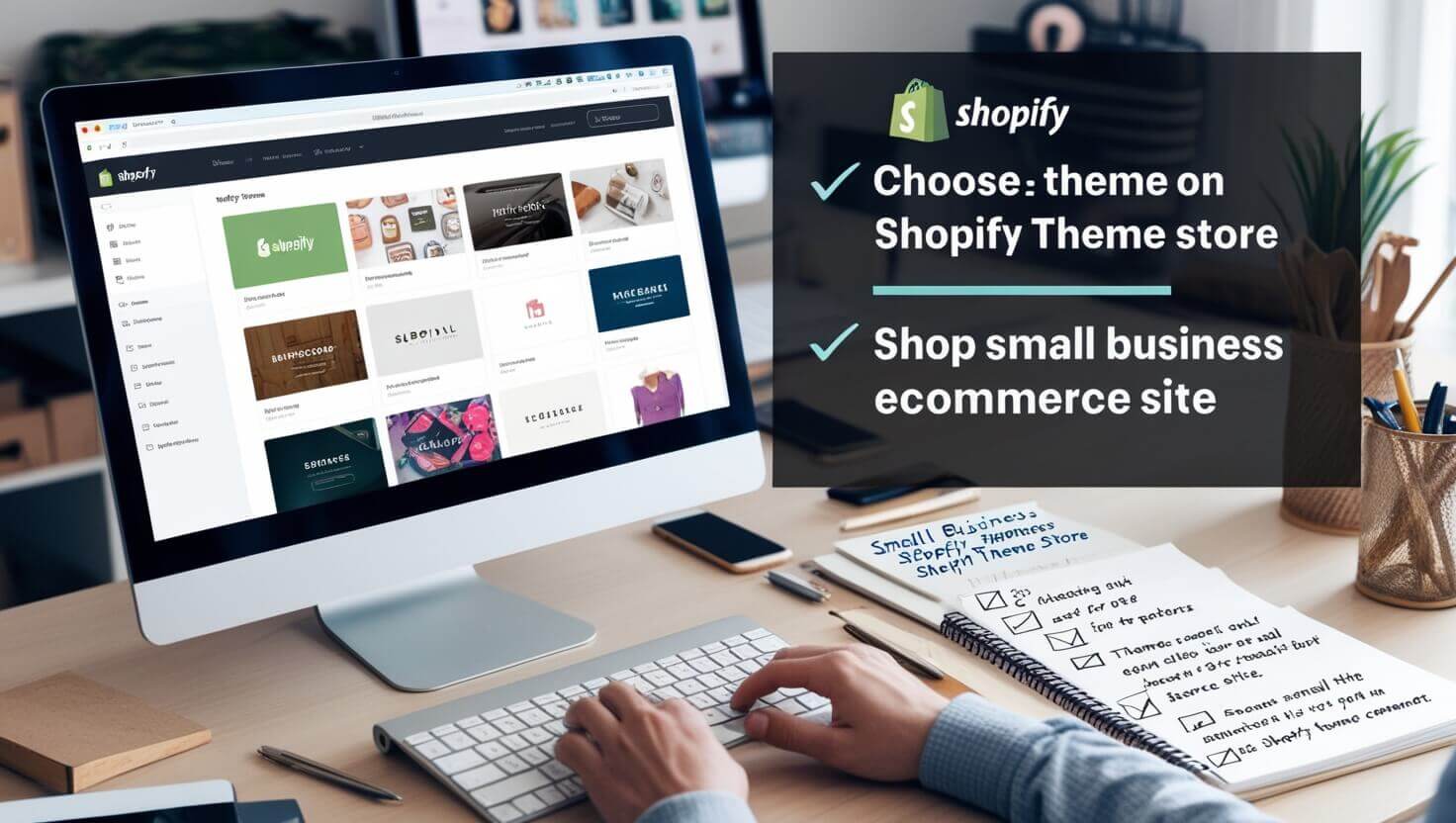How to Choose a Free Shopify Template for Your Small Business

Table of Contents:
- Introduction
- Why Shopify Templates Matter for Small Businesses
- Understanding Your Brand and Audience
- Key Factors in Choosing a Free Shopify Template
- Pros and Cons of Free Templates
- Step-by-Step Guide to Choosing the Right Free Template
- Examples of Popular Free Shopify Templates and Their Ideal Use Cases
- How to Customize a Free Shopify Template for Maximum Impact
- Conclusion
Introduction
Starting a Shopify store can be both thrilling and nerve-wracking, especially with so many options for templates, features, and designs. Many small businesses worry about picking the wrong template, fearing it could turn customers away before they even see the products. The template you choose impacts how your audience perceives your store, and whether they stick around long enough to explore what you offer.
In this guide, we’ll dive into everything you need to know about selecting the right free Shopify template for your business. By the end, you’ll have a clear understanding of what makes a great template and how you can use it to boost conversions, impress visitors, and grow your online store. Along the way, we’ll also highlight Prateeksha Web Design, a leading expert in Shopify web design, digital marketing, and SEO for small businesses. Ready to create a store that’s optimized for success? Let’s dive in!
Why Shopify Templates Matter for Small Businesses
When you visit an online store, first impressions are critical. If your site is visually unappealing, cluttered, or hard to navigate, visitors will likely leave before giving your products a chance. Shopify templates serve as the storefront of your online business, influencing both visitor engagement and conversion rates.
Imagine walking into a disorganized, chaotic store in person. You probably wouldn’t stay long, right? It’s the same with online shopping. A well-chosen template conveys professionalism and builds trust instantly, encouraging users to stick around, browse, and, ideally, make a purchase. Let’s look at some ways a thoughtfully chosen template can impact your small business.
1. Impact on Customer Perception and Trust
The design of your site affects how customers feel about your brand. If the template looks clean, functional, and professional, visitors will likely associate those qualities with your business. And for small businesses, building trust is key to converting first-time visitors into loyal customers.
2. Encouraging User Engagement and Navigation
An effective template also ensures easy navigation. With an intuitive layout, customers can find the products they want without frustration. Think about it: if your template makes visitors feel like they’re trapped in a maze, they’ll probably hit the back button.
3. Showcasing Products and Services
A quality Shopify template will let your products shine by placing images, descriptions, and calls to action strategically on the page. For small businesses, a template that focuses on visual appeal without clutter can drive higher engagement and increase conversion rates.
Prateeksha Web Design: This is where Prateeksha Web Design’s expertise shines. With years of experience helping small businesses achieve a high-converting layout that balances aesthetics with functionality, they’ve developed designs that seamlessly enhance customer experience while ensuring your products get the spotlight they deserve.
Understanding Your Brand and Audience
Before jumping into the Shopify Theme Store and browsing hundreds of templates, take a step back and think about your brand identity. Your brand should resonate through the template you choose—it’s what makes you stand out from the competition.
1. Define Your Brand’s Core Values and Personality
Your brand isn’t just your logo or color scheme; it’s an emotional connection you create with your audience. Are you a fun, quirky brand, or do you focus on luxury and sophistication? The answer will guide your template choice.
2. Identify Your Target Audience
Knowing your audience is essential. Consider what kind of design elements would appeal to them. For example, younger customers might appreciate a minimalist layout, while an older demographic may prefer a more traditional look.
3. Match Template Design with Brand Voice
When you’re clear on your brand and audience, select a template that mirrors that identity. For instance, if you sell organic skincare products, a template with clean lines, soft colors, and natural motifs will reflect your brand’s commitment to wellness and simplicity.
Key Factors in Choosing a Free Shopify Template
With a strong understanding of your brand and target audience, it’s time to dive into the technical aspects of template selection. Here are the critical factors to keep in mind as you pick your ideal Shopify template:
1. Mobile Responsiveness
Mobile shopping is on the rise, and if your site isn’t mobile-friendly, you’ll miss out on a huge chunk of potential sales. Make sure the template adapts well to all screen sizes. Test it on your own mobile device and check if navigation, text, and images look and work well.
2. Customization Options
Free templates may have limited customization, but there’s usually enough flexibility to make adjustments to suit your brand. Look for templates that let you change colors, fonts, and layouts to create a personalized experience for your customers.
3. Speed and Performance
A slow-loading site is a conversion killer. When browsing templates, check if they’re designed for optimal load speed. Choose templates that are lightweight and optimized for fast loading, especially if you plan to add multiple high-quality images or videos.
Prateeksha Web Design: Prateeksha Web Design can help you identify templates that meet all these criteria and more, ensuring that your chosen template ticks all the boxes for success.
Pros and Cons of Free Templates
Free Shopify templates come with their own set of advantages and limitations. Let’s explore some of these to help you decide if a free template is right for your business.
Benefits of Free Templates
- Cost-Effective: For small businesses on a budget, free templates offer a way to establish an online presence without a large upfront cost.
- Easy to Set Up: Free templates often come with user-friendly designs and straightforward customization options, making them accessible even to those with limited technical skills.
- Ideal for Testing: If you’re new to online selling, free templates are great for testing the waters without committing to a paid template.
Downsides of Free Templates
- Limited Customization: While you can make some changes, free templates may not offer the depth of customization you need to fully reflect your brand.
- Basic Features: Free templates typically lack advanced features like integrated SEO tools, enhanced animations, or customer support.
- Less Unique: Since free templates are widely available, your store may end up looking similar to others.
Step-by-Step Guide to Choosing the Right Free Template
Choosing the best template involves a process. Here’s a step-by-step guide to make your selection seamless and successful.
Step 1: Define Your Store’s Goals
Identify the primary goals of your store. Do you want to build brand awareness, drive sales, or showcase a small range of products? Your goals will influence your choice of template design and functionality.
Step 2: Research and Preview Templates
Spend time in the Shopify theme store previewing templates. Look for designs that align with your brand and explore how they function in different scenarios. Preview templates in live mode to get a feel for their actual performance.
Step 3: Test for Usability and Navigation
Ensure the template is intuitive and easy to navigate. Test the main pages, product listings, and checkouts to see if users can easily find what they’re looking for.
Step 4: Get a Second Opinion
Show the template to someone outside of your business, preferably from your target audience. They can offer unbiased insights into usability and aesthetic appeal.
Examples of Popular Free Shopify Templates and Their Ideal Use Cases
Let’s look at some free Shopify templates, who they work best for, and why they’re so popular among small businesses:
- Debut: This is the ideal choice for beginners, offering a clean and straightforward layout. It’s great for showcasing a small number of products, and it performs well on mobile devices.
- Brooklyn: If you’re in the fashion or lifestyle industry, Brooklyn offers a sleek, edgy look. It’s designed for brands that want a bold, image-heavy template.
- Simple: Perfect for minimalist brands, the Simple template provides a clean and modern look without distracting elements.
Prateeksha Web Design’s Recommendations
Prateeksha Web Design can guide you through more free templates based on your business’s specific needs, ensuring you start with the best foundation.
How to Customize a Free Shopify Template for Maximum Impact
Even a free template can be transformed into a
unique brand experience with some customization. Here are some tips:
1. Personalize Images and Colors
Swap out the template’s default images with high-quality photos that showcase your products. Use brand colors consistently to reinforce your brand identity.
2. Create Engaging Copy
Write compelling copy that speaks to your audience. Every word, from headlines to product descriptions, should reflect your brand’s voice and values.
3. Optimize for SEO
Customize meta descriptions, product descriptions, and page titles with relevant keywords. Shopify offers built-in SEO tools to help improve your visibility on search engines.
Conclusion
Choosing the right Shopify template can make a significant difference in how your brand is perceived and how well your store performs. Prateeksha Web Design is ready to assist you in navigating these options, ensuring that you start with a strong, impactful design that aligns with your business goals. Take the first step in setting up a successful online store, and remember: the right design can be the bridge between a casual visitor and a loyal customer. Don’t wait—get started on your Shopify journey today!
About Prateeksha Web Design
Prateeksha Web Design Company offers expertise in selecting the most suitable free Shopify template for small businesses. They guide businesses in choosing templates that align with their brand identity, target audience, and product range. They also consider factors like responsiveness, customization options, and customer support while advising on the best free Shopify templates.
Interested in learning more? Contact us today.
